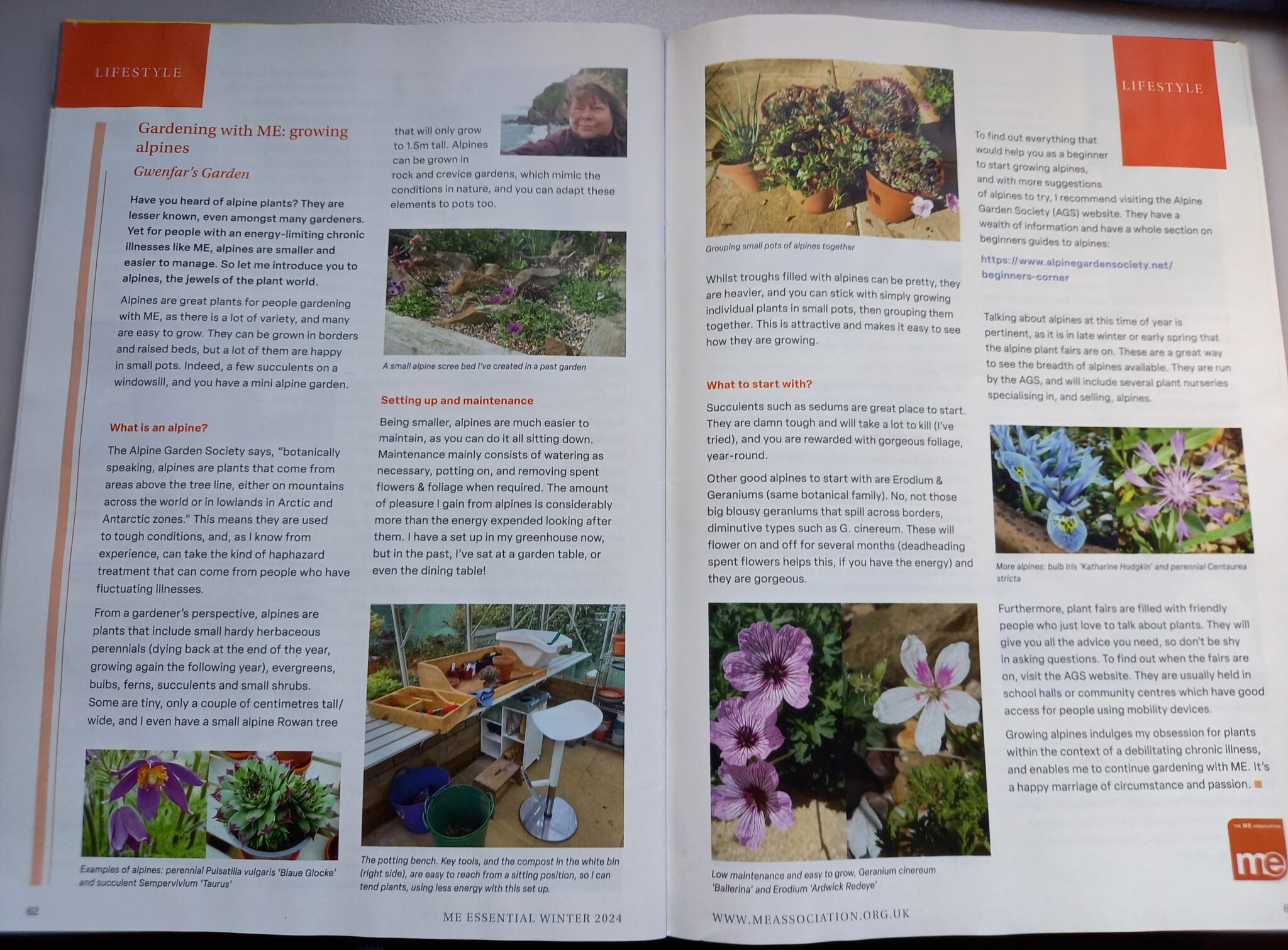
Have you heard of alpine plants? They are lesser known, even amongst many gardeners. Yet for people with an energy limiting chronic illnesses like ME, alpines are smaller and easier to manage. So let me introduce you to alpines, the jewels of the plant world.
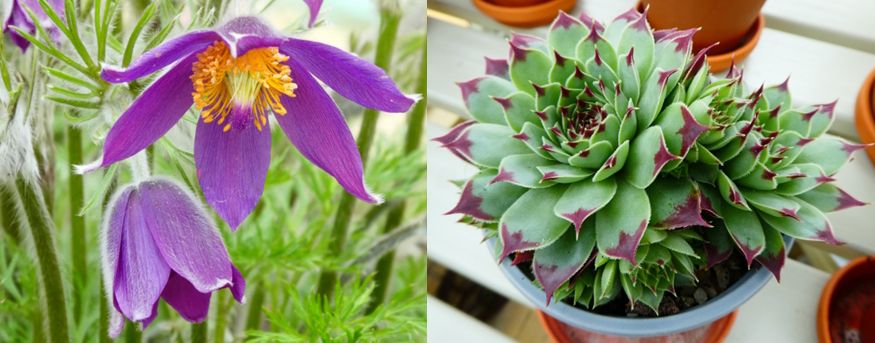
and succulent Sempervivium ‘Taurus’.
Alpines are great plants for people gardening with ME, as there is a lot of variety, and many are easy to grow. They can be grown in borders and raised beds, but a lot of them are happy in small pots. Indeed, a few succulents on a windowsill, and you have a mini alpine garden.
What is an alpine?
The Alpine Garden Society says, “botanically speaking, alpines are plants that come from areas above the tree line, either on mountains across the world or in lowlands in Arctic and Antarctic zones.” This means they are used to tough conditions, and, as I know from experience, can take the kind of haphazard treatment that can come from people who have fluctuating illnesses.
From a gardener’s perspective, alpines are plants that include small hardy herbaceous perennials (dying back at the end of the year, growing again the following year), evergreens, bulbs, ferns, succulents and small shrubs. Some are tiny, only a couple of centimetres tall/wide, and I even have a small alpine Rowan tree that will only grow to 1.5m tall. Alpines can be grown in rock and crevice gardens, which mimic the conditions in nature, and you can adapt these elements to pots too.
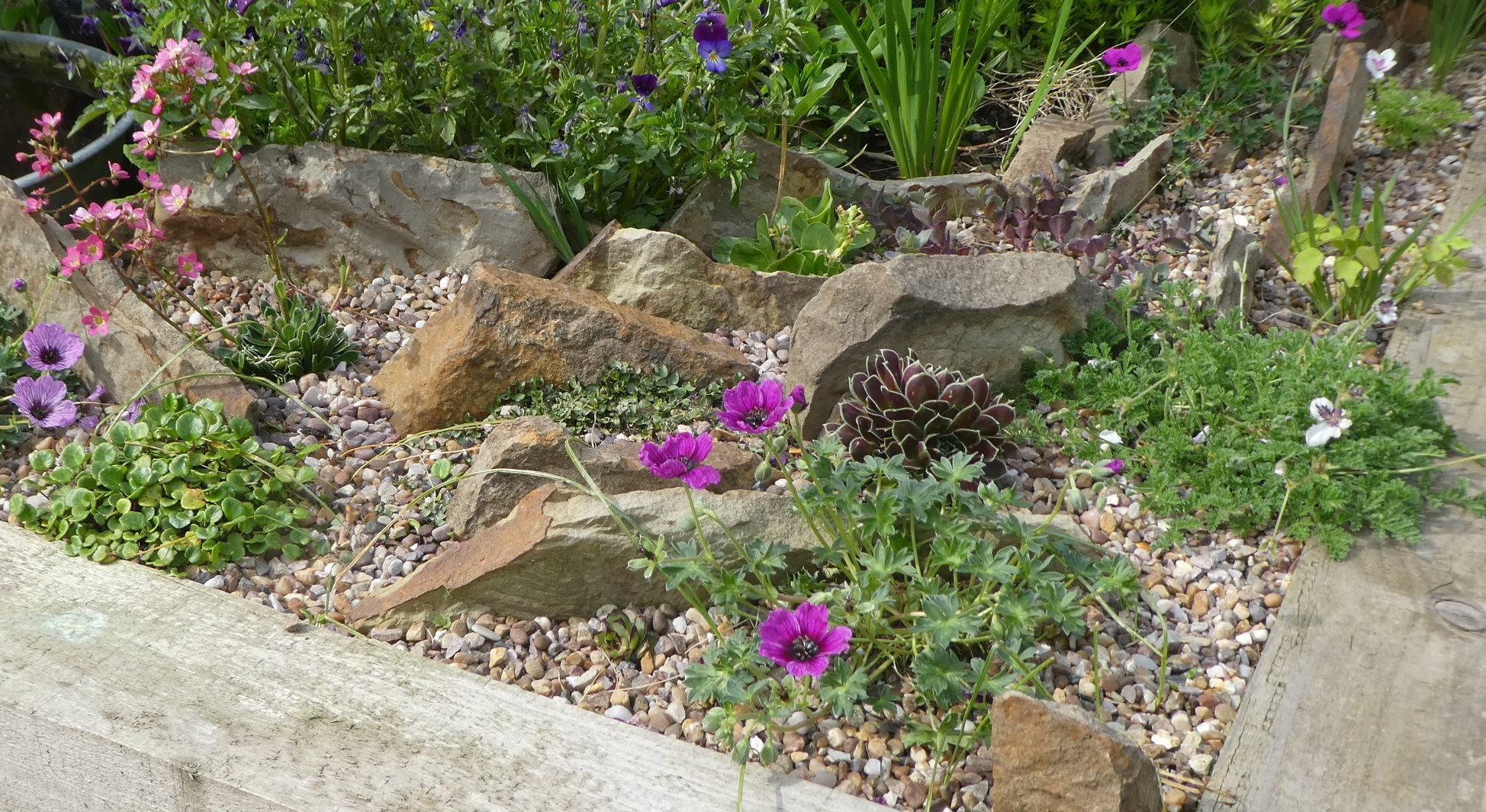
Setting up and maintenance
Being smaller, alpines are much easier to maintain, as you can do it all sitting down. Maintenance mainly consists of watering as necessary, potting on, and removing spent flowers & foliage when required. The amount of pleasure I gain from alpines is considerably more than the energy expended looking after them. I have a set up in my greenhouse now, but in the past, I’ve sat at a garden table, or even the dining table!
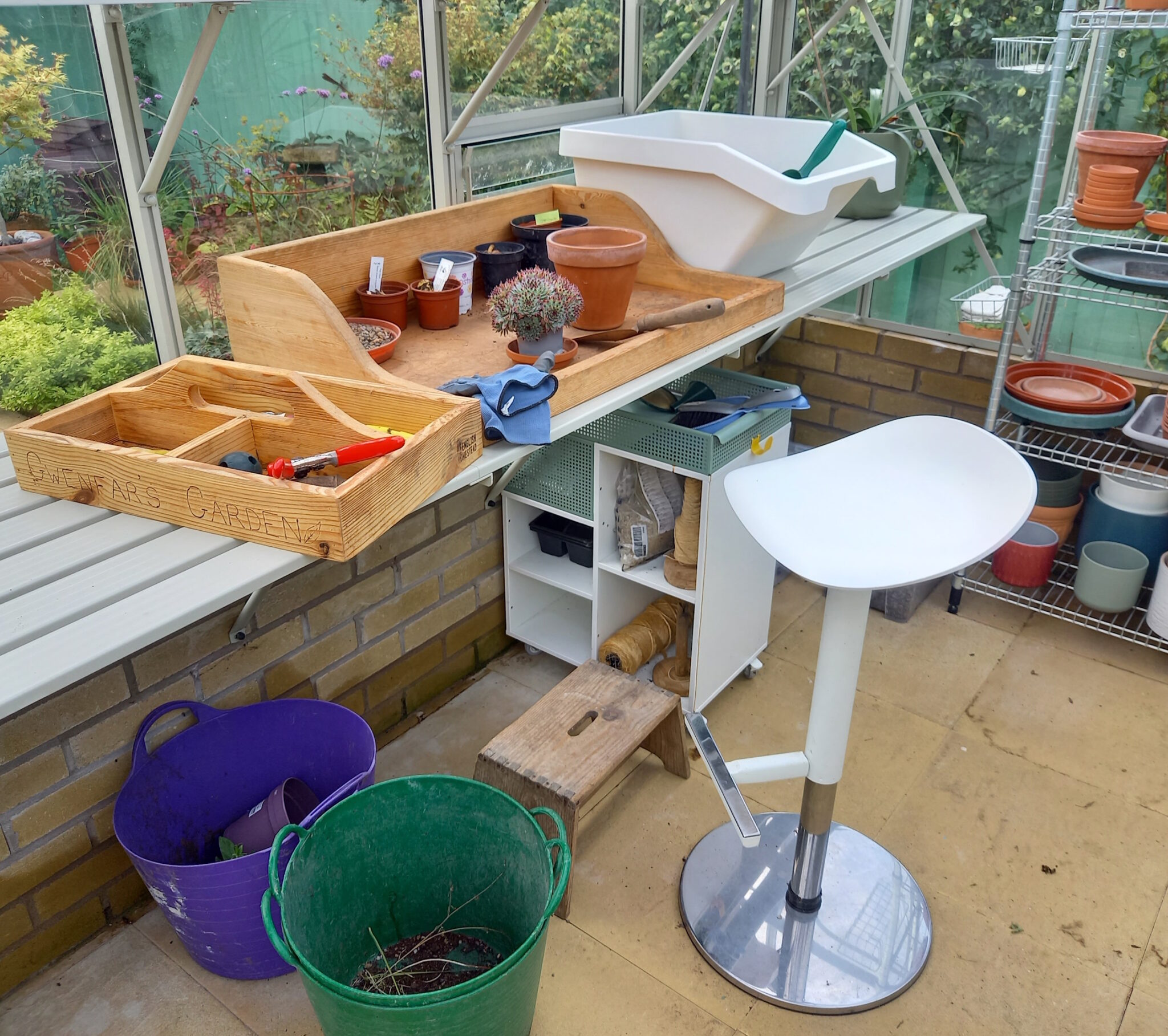
Whilst troughs filled with alpines can be pretty, they are heavier, and you can stick with simply growing individual plants in small pots, then grouping them together. This is attractive and makes it easy to see how they are growing.
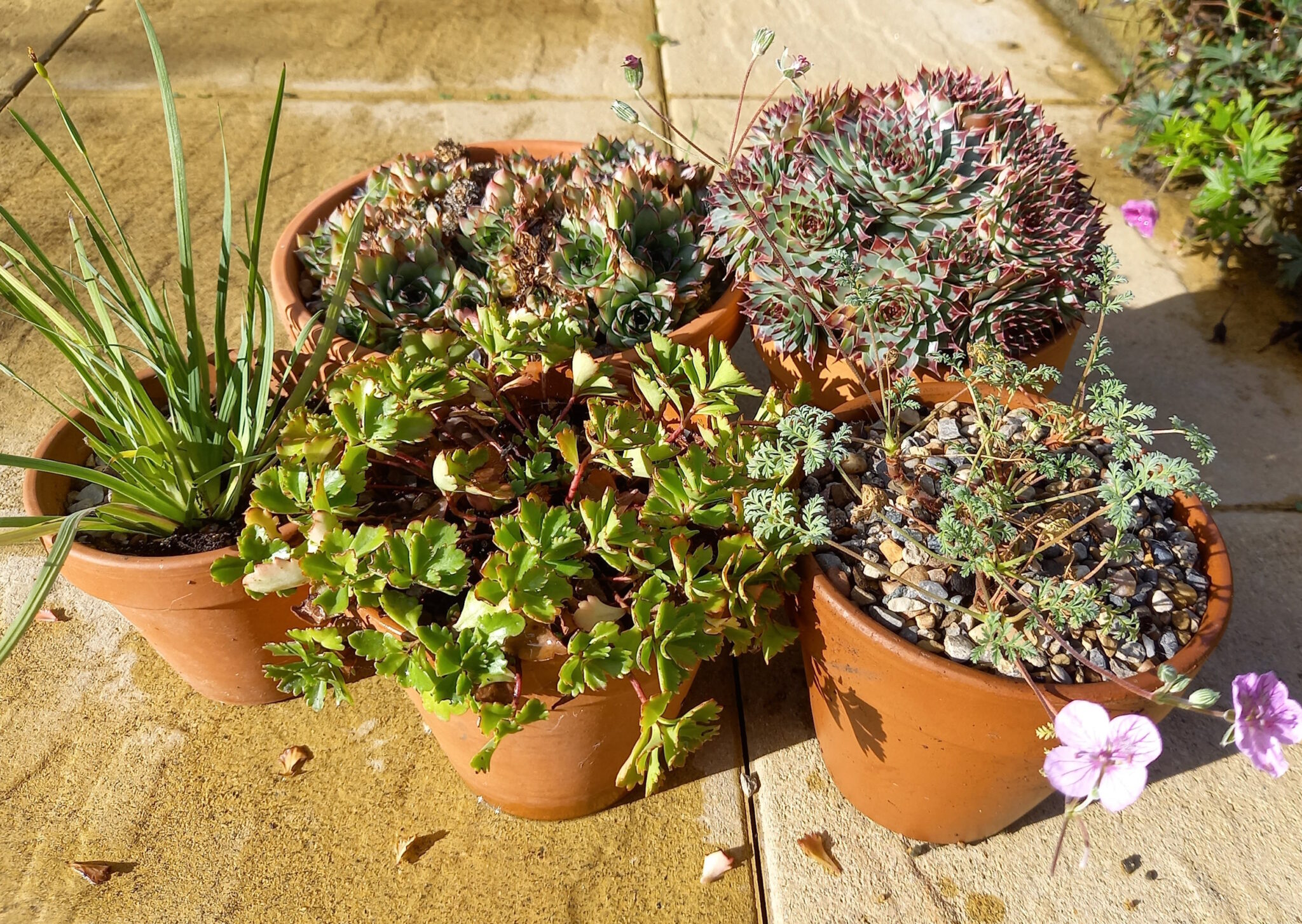
What to start with?
Succulents such as sedums are great place to start. They are damn tough and will take a lot to kill (I’ve tried), and you are rewarded with gorgeous foliage, year-round.
Other good alpines to start with are Erodium & Geraniums (same botanical family). No, not those big blousy geraniums that spill across borders, diminutive types such as G. cinereum. These will flower on and off for several months (deadheading spent flowers helps this, if you have the energy) and they are gorgeous.
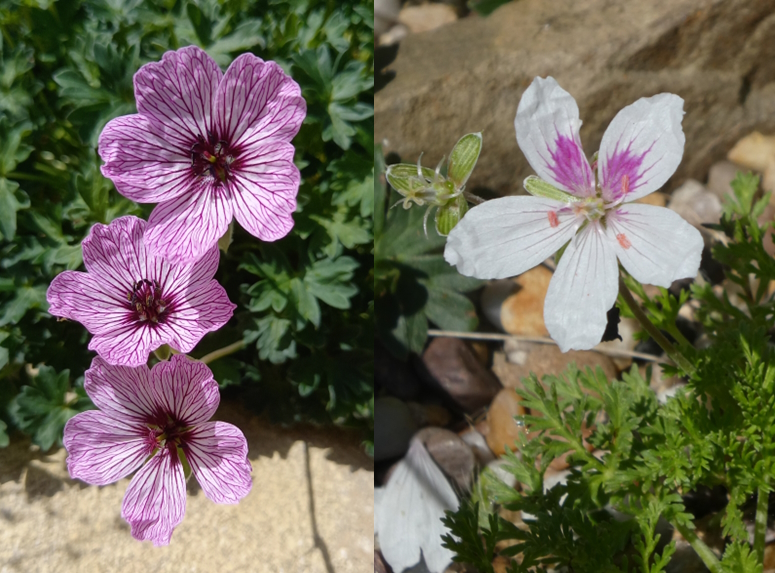
and Erodium ‘Ardwick Redeye’.
To find out everything that would help you as a beginner to start growing alpines, and with more suggestions of alpines to try, I recommend visiting the Alpine Garden Society (AGS) website. They have a wealth of information and have a whole section on beginners guides to alpines.
Talking about alpines at this time of year is pertinent, as it is in late winter or early spring that the alpine flower shows are on. These are a great way see the breadth of alpines available. They are run by the AGS, and will include several plant nurseries specialising in, and selling, alpines.
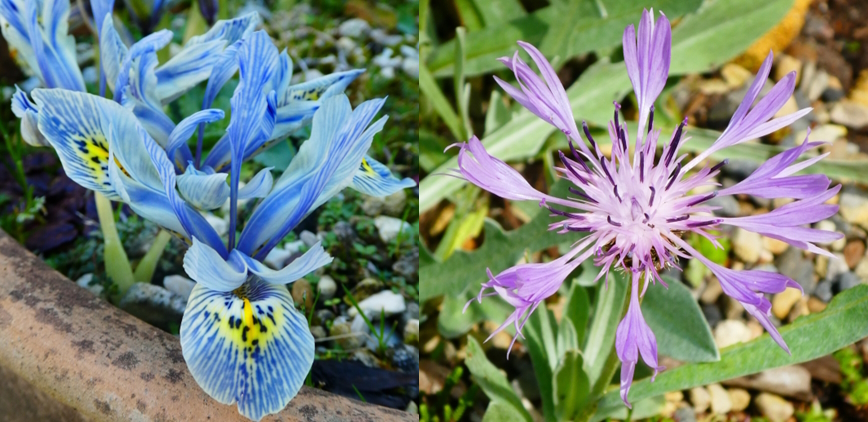
Furthermore, plant fairs are filled with friendly people who just love to talk about plants. They will give you all the advice you need, so don’t be shy in asking questions. To find out about when the fairs are on, visit the AGS website. They are usually held in school halls or community centres, which have good access for people using mobility devices.
Growing alpines indulges my obsession for plants within the context of a debilitating chronic illness, and enables me to continue gardening with ME. It’s a happy marriage of circumstance and passion.
* * * * *
Published previously in ME Essential:
This is such a good article! Thank you for sharing it here.